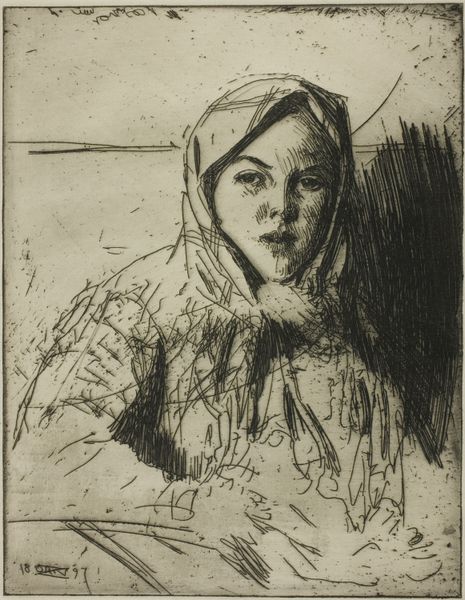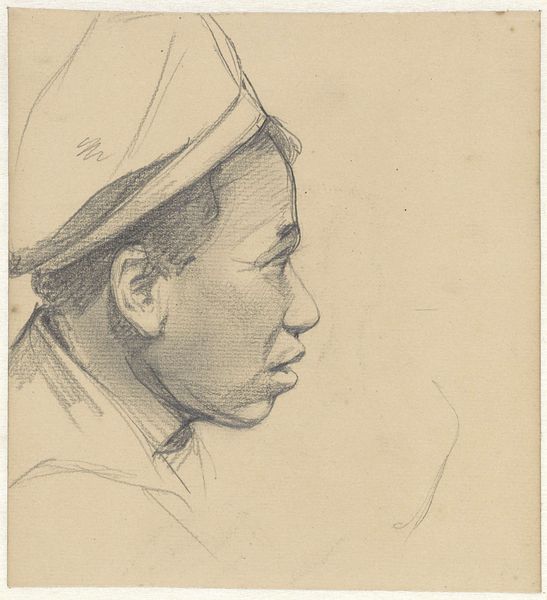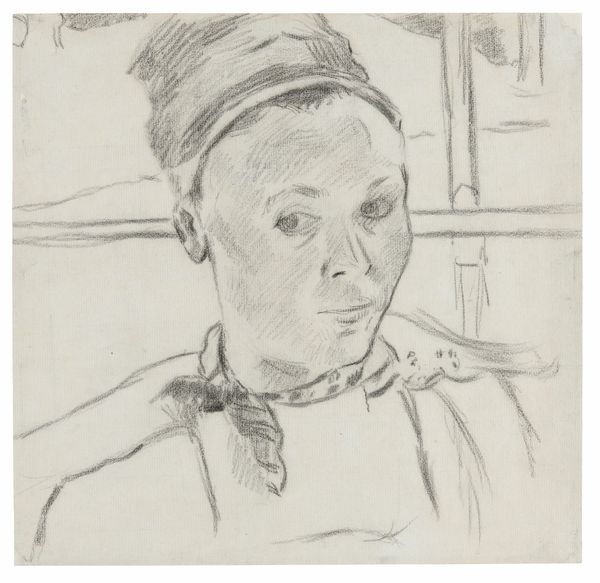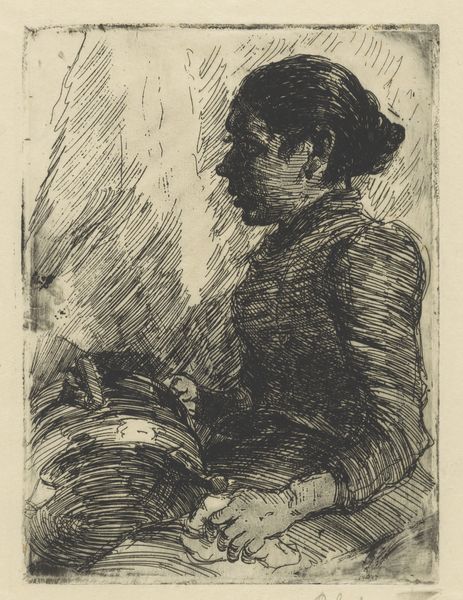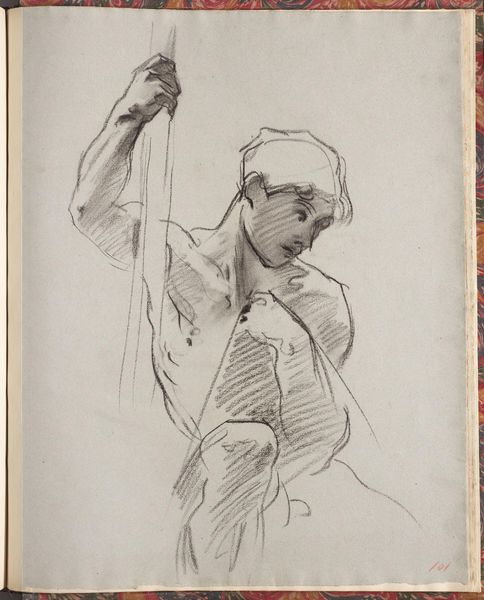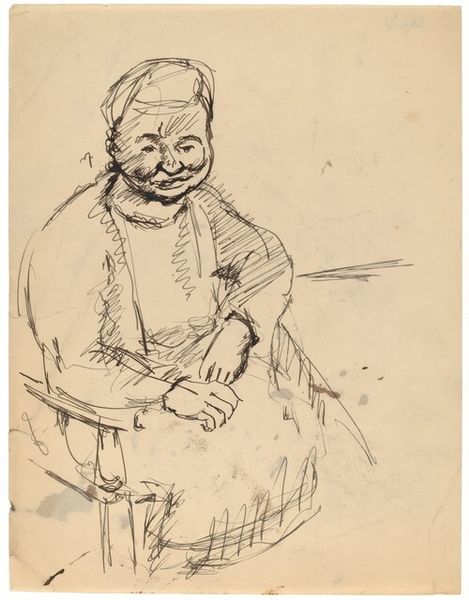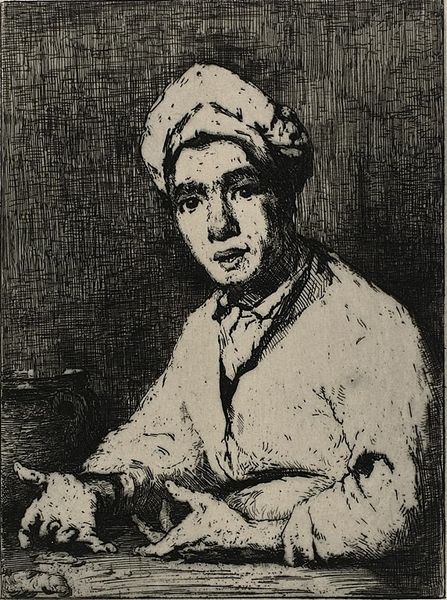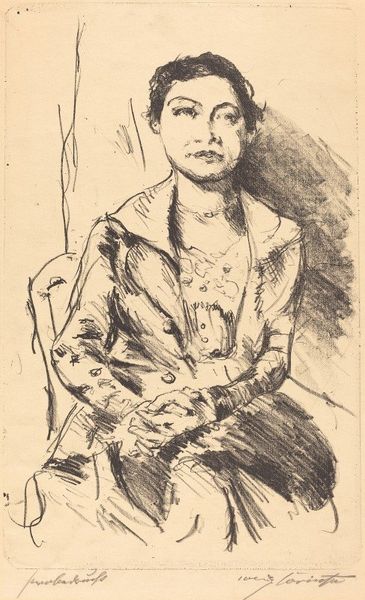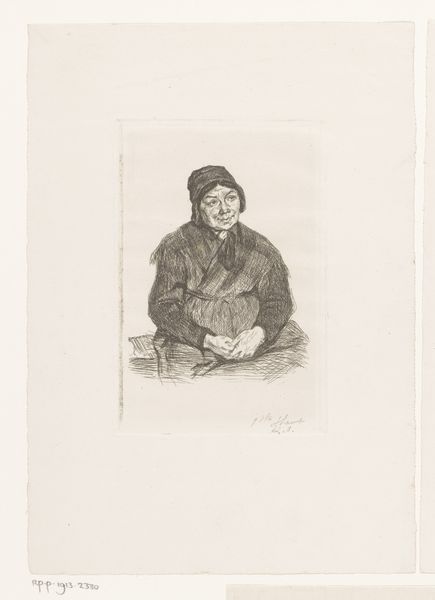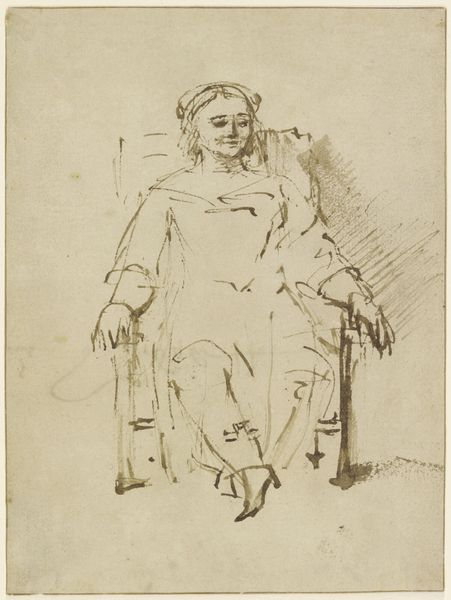
print, etching
#
pencil drawn
# print
#
etching
#
figuration
Dimensions: 224 mm (height) x 175 mm (width) (plademaal)
Curator: Looking at this piece, I am struck by the subtle emotional depth the artist has captured. Editor: Indeed. What we have here is "Portrait of a Nurse" by Henry Nielsen, completed in 1933. It’s an etching, a type of printmaking using acid to corrode the design into a metal plate. Considering it’s from the collection of the SMK—the National Gallery of Denmark—I find myself pondering the context of its creation. Curator: Context is key. I immediately read this portrait through a feminist lens, noting the nuanced representation of a working woman during a period of significant social change. The lines almost seem tentative, suggesting a vulnerability rarely afforded to images of female laborers in art. Editor: I'm curious how the institutional setting, in this case a national museum, impacts our reading. It’s a formal portrait but also quite raw and sketch-like, perhaps challenging traditional power dynamics associated with portraiture. Consider also that 1933 in Denmark wasn't just any year; social democracy was on the rise, affecting the status and representation of professions like nursing. Curator: Absolutely. Nursing was becoming more professionalized, and simultaneously, the image of the nurse was being deployed to evoke notions of care, duty, and even national identity. Yet, there’s something melancholic in her gaze. Is it an indictment of the limited roles available to women, or a quiet assertion of dignity in the face of difficult circumstances? I wonder what stories this nurse could tell? Editor: Or what stories did Nielsen intend to convey? The choice of etching, with its capacity for fine detail and tonal variation, certainly adds to the psychological complexity. There’s a palpable tension between the precision of the technique and the seemingly unfinished quality of the drawing. Did that choice align with the popular imagery found in propaganda at the time? Curator: Perhaps he aimed to humanize the nurse beyond the propagandistic tropes, revealing the individual behind the uniform and her labor, her lived reality, maybe in defiance of political expectations. It's a potent reminder that every representation, even within official institutions, is an intervention in broader social narratives. Editor: Agreed. It speaks volumes, not just about the subject, but about the power of art to subtly negotiate and even challenge the social and political landscapes in which it's created and later viewed. Curator: Exactly. Now I look at this work through an entirely new scope. Thank you. Editor: As do I. The intersection of art and its evolving context continues to surprise.
Comments
No comments
Be the first to comment and join the conversation on the ultimate creative platform.
